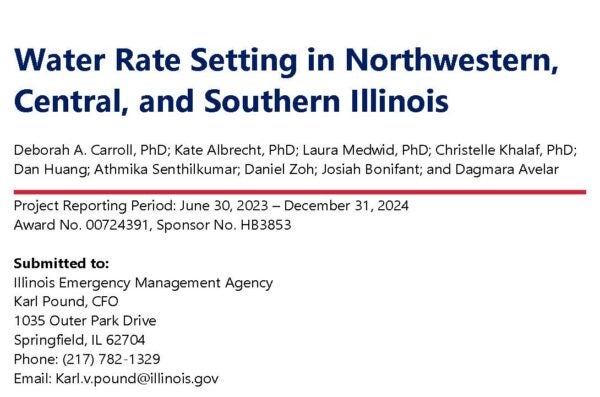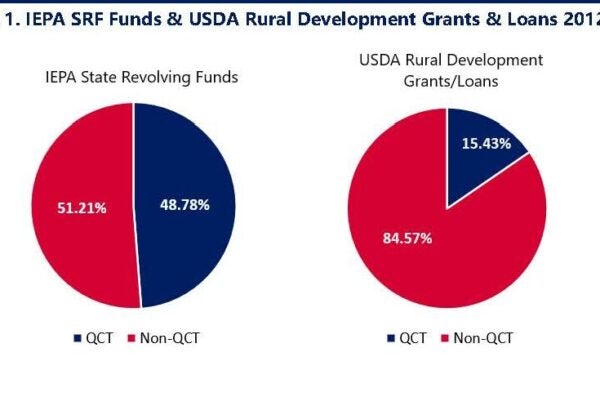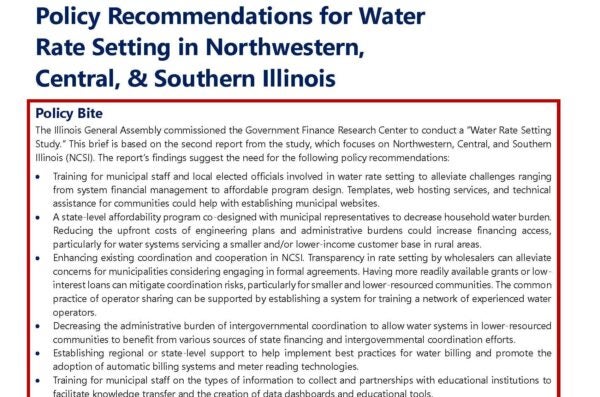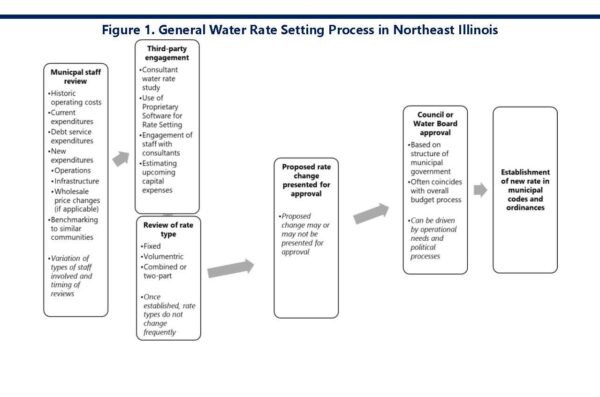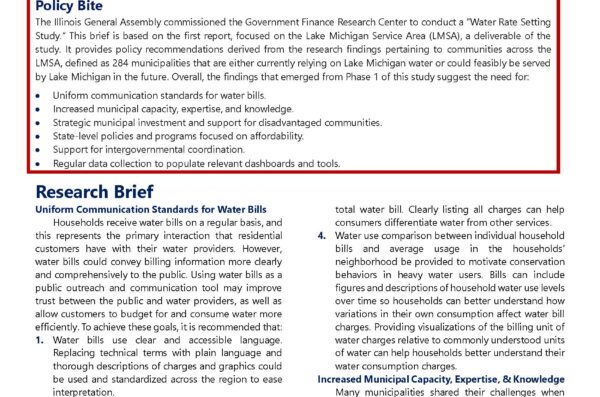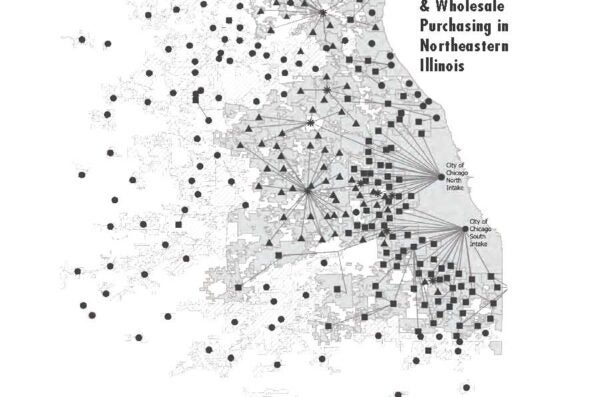Water Rate Setting Study
Project

Municipal water departments and water utilities operate under Illinois law and establish their own rate structures. The Public Water District Act, for example, states that “it shall be the duty of such board to establish rates and charges for water and water service, which shall be sufficient at all times to pay the cost of maintenance and operation, depreciation, and principal of and interest on all bonds issued and other obligations incurred under the provisions of Sections 1 through 23 of this Act.” Boards and elected city officials are required to set the rates to cover the costs of water and sewer provision. Yet, little is known about how such rates are actually set.
In 2021, the Illinois General Assembly tasked the GFRC to examine the components of water bills, how municipalities and water districts establish rates, what factors influence rate adjustments as well as the extent to which State or local policies drive cost increases or variations in rate-settings, the definition of affordability throughout the State and any variances to that definition, whether equity and affordability are integrated into the rate-setting process, how rate-setting varies between economically disadvantaged and economically advantaged communities, and opportunities for increased intergovernmental coordination for setting equitable water rates. Below, you will find project deliverables, information on the research team, and the project’s intergovernmental advisory committee.
If you are interested in accessing our dataset or exploring potential collaborations utilizing the data we have collected, please fill the dataset access form. We look forward to hearing your ideas and exploring opportunities to work together!
